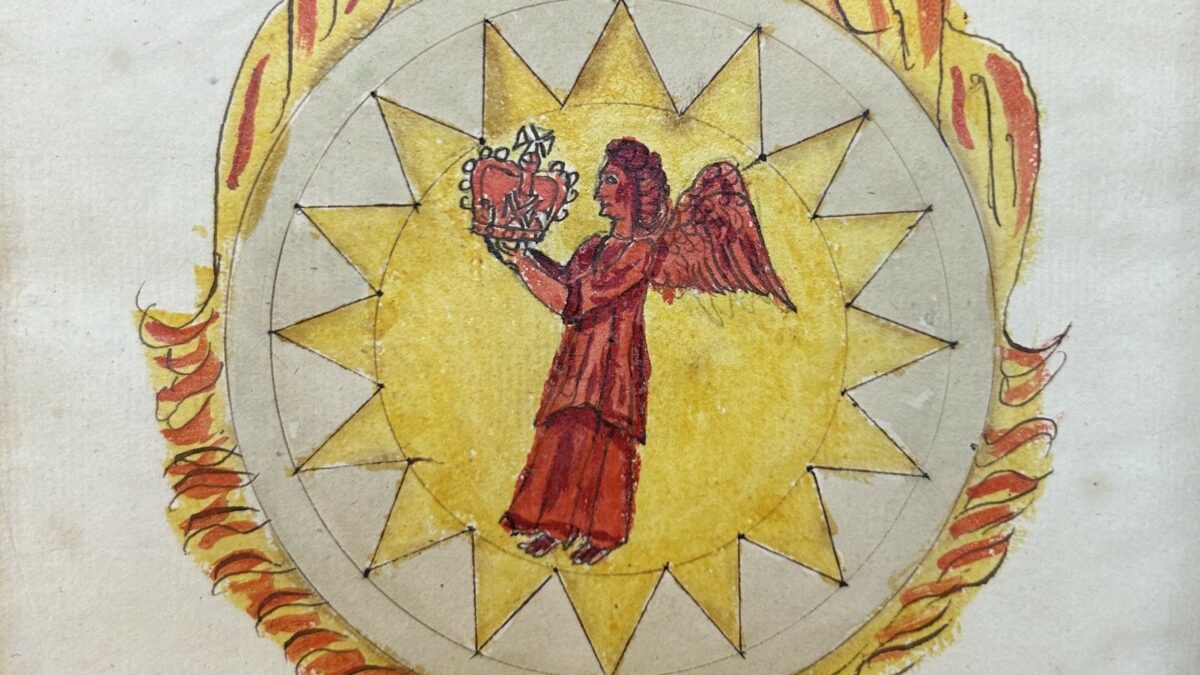While the rare books are stored off site during Hertford’s major library re-development, rare books expert Sophie Floate takes a further look into our manuscript collection, most of which are currently housed at the Bodleian Library. Several of the items there are on broadly astrological or alchemical themes, some of which are quite strange. Ranging in date from the 15th to the 18th centuries, and given by various alumni, they cover an eclectic mix of subjects!
MS 3: 15th century Arabic texts in translation
MS 3 is a collection of Latin translations of mainly Arabic texts; the manuscript was probably written in the second half of the 15th century but is of uncertain origin. The texts themselves are mainly those of the polymath Thābit ibn Qurra, born in Mesopotamia in approximately 826 or 836 CE. He wrote extensively on mathematics, medicine and astronomy, though only a few of his works have survived. The texts in this manuscript are some of his own work and some based on Ptolemy and al-Farghani’s theories relating to astronomy, including discussion of celestial lines, the distances and sizes of the heavenly bodies. Some of the texts (for example De motu octavae spharae on the now-obsolete theory of the oscillation of the equinoxes) may in fact have been written by others, including his own grandson Ibrahim ibn Sinan. The other texts are on similar subjects, including tables used for computing the position of the sun, moon and planets relative to the fixed stars.
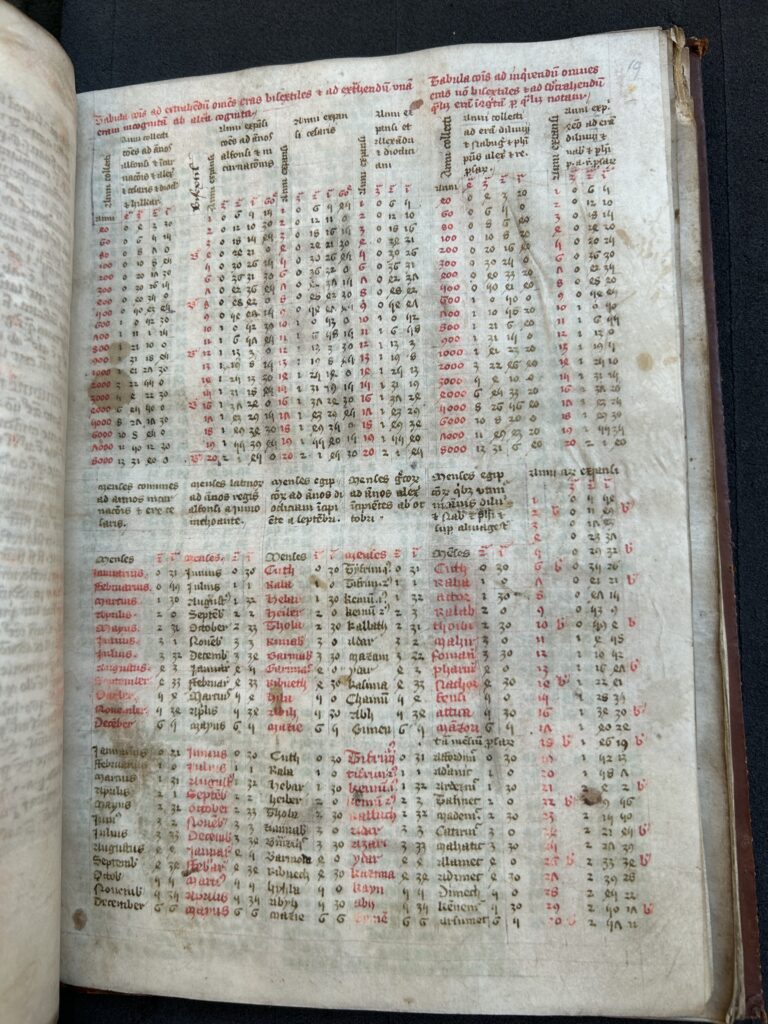
The manuscript is written on parchment and seems to consist of several different hands, so perhaps were collected together at a later date. The manuscript has an inscription at head and foot of the first folio:
“Liber Aulæ Magd: Oxon: 1673. Ex dono Nath: Freind de Westerly in agro Glocestrensi”.
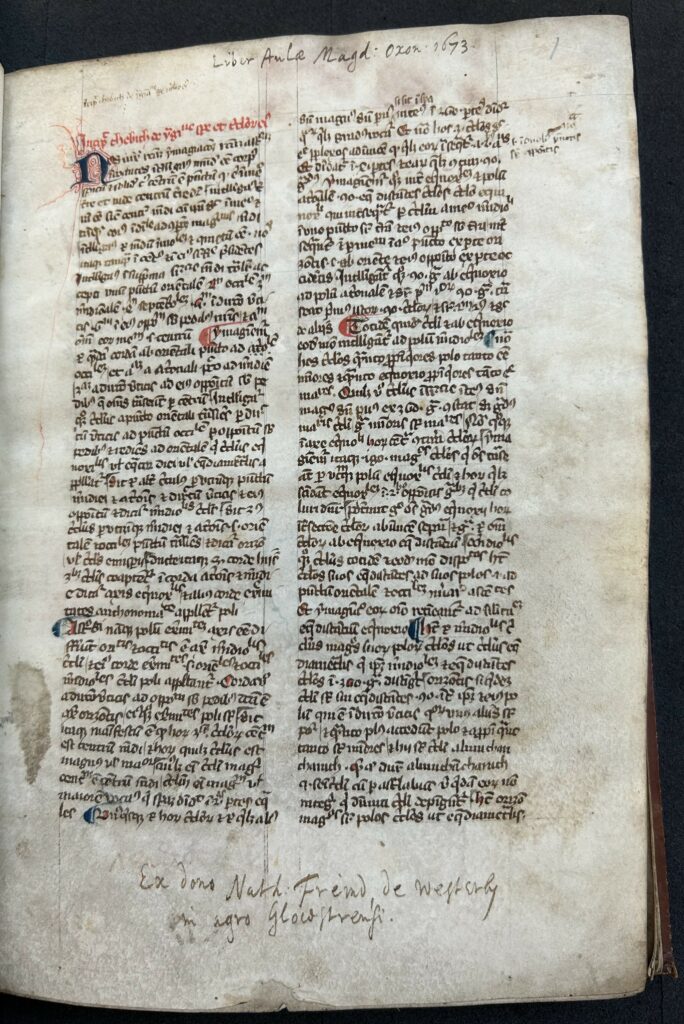
Hertford MS 3 record in Medieval Manuscripts in Oxford Libraries catalogue
Nathaniell Freind is probably the same man who was schoolmaster of Westerleigh Endowed School in Gloucestershire from 1662-1687.1 He doesn’t appear to have matriculated at Oxford, though he is listed as subscriber to the publication of Anthony Wood’s Athenae Oxoniensis, printed in 1692. He wrote a brief life of his brother John, detailing how he and John had fought for the Parliamentarians at Cirencester and were taken prisoner and held at Oxford. He also wrote some touching memorials to his son (also John) and one of his daughters, Sarah. The words he wrote about Sarah are particularly moving since she died aged only 5 years old. His son John had matriculated at St Edmund Hall in 1672 and Freind has pasted into this book cut-out signatures from John’s letters to him, which he has reproduced in manuscript, as John also died young. The volume is now in the Bodleian Library (MS. Top. Oxon. f.31).2 A few books from Freind’s library are now in other institutions, for example, a copy of Copernicus’ De revolutionibus orbium coelestium (“On the revolutions of the heavenly spheres”) in John Ryland’s library.
Hertford MS 4: astrology and urine
MS 4 is another collection of texts, in different hands, and all probably copied in the 15th century. They are broadly astrological in content, including Johannes de Sacrobosco’s De sphaera mundi (On the sphere of the world), William Rede’s Canones tabularum and a catalogue of constellations by Bernard of Parma. The third work is by William of Marseille – De urina non visa (On unseen urine). William was a physician at a time when a popular way to diagnose illness was to examine urine. However, William’s treatise suggests checking the configuration of the sky at the time of the consultation instead. It proved to be a popular work and much copied.
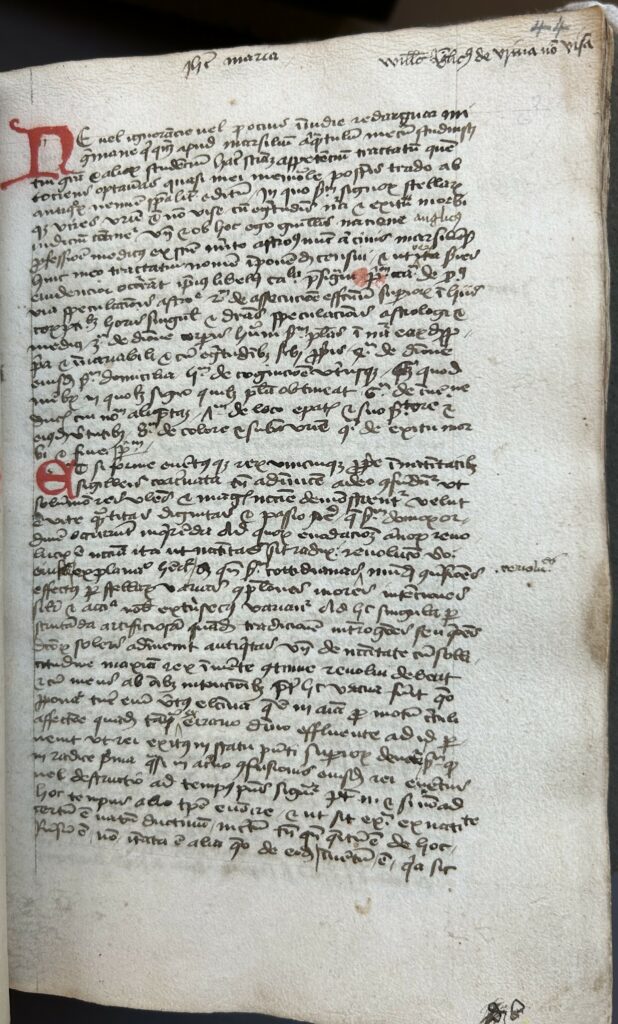
This volume is unusual for its quire guards, also know as sewing guards. 14 leaves of parchment have been palimpsested in order to be used as quire guards to protect the paper manuscripts, as discussed by Hannah Ryley in her article ‘Constructive Parchment Destruction in Medieval Manuscripts’.3 This is a process of re-using parchment by removing the text written on it – usually by scraping the ink off with a knife. Sometimes parchment treated in this way would be used again for writing, but in this case, the now-blank leaves were used as guards to protect the manuscript texts (which are written on paper) within the volume.
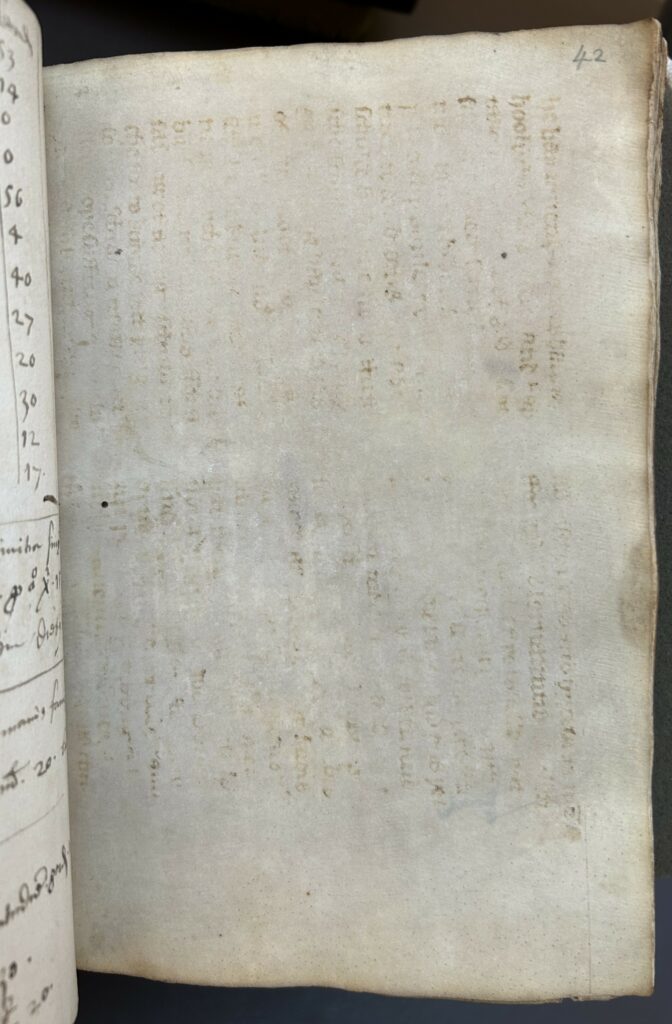
Hertford College MS 4 record in Medieval Manuscripts in Oxford’s Libraries catalogue
Hertford MS 7: 18th century alchemy
MS 7 is a curious item. Written much later than the two previous manuscripts, possibly in a juvenile hand, this work entitled Coronatio Naturae (Crowning of Nature) is an alchemical work probably compiled in the 18th century.
The text of the Coronatio Naturae had been circulating since the 16th century, usually accompanied by illustrations depicting an alchemical vessel, various symbolic figures (lions, toads, birds, angels, trees, moon and star) shown dissolving, evaporating and in various ways transforming into different substances.4
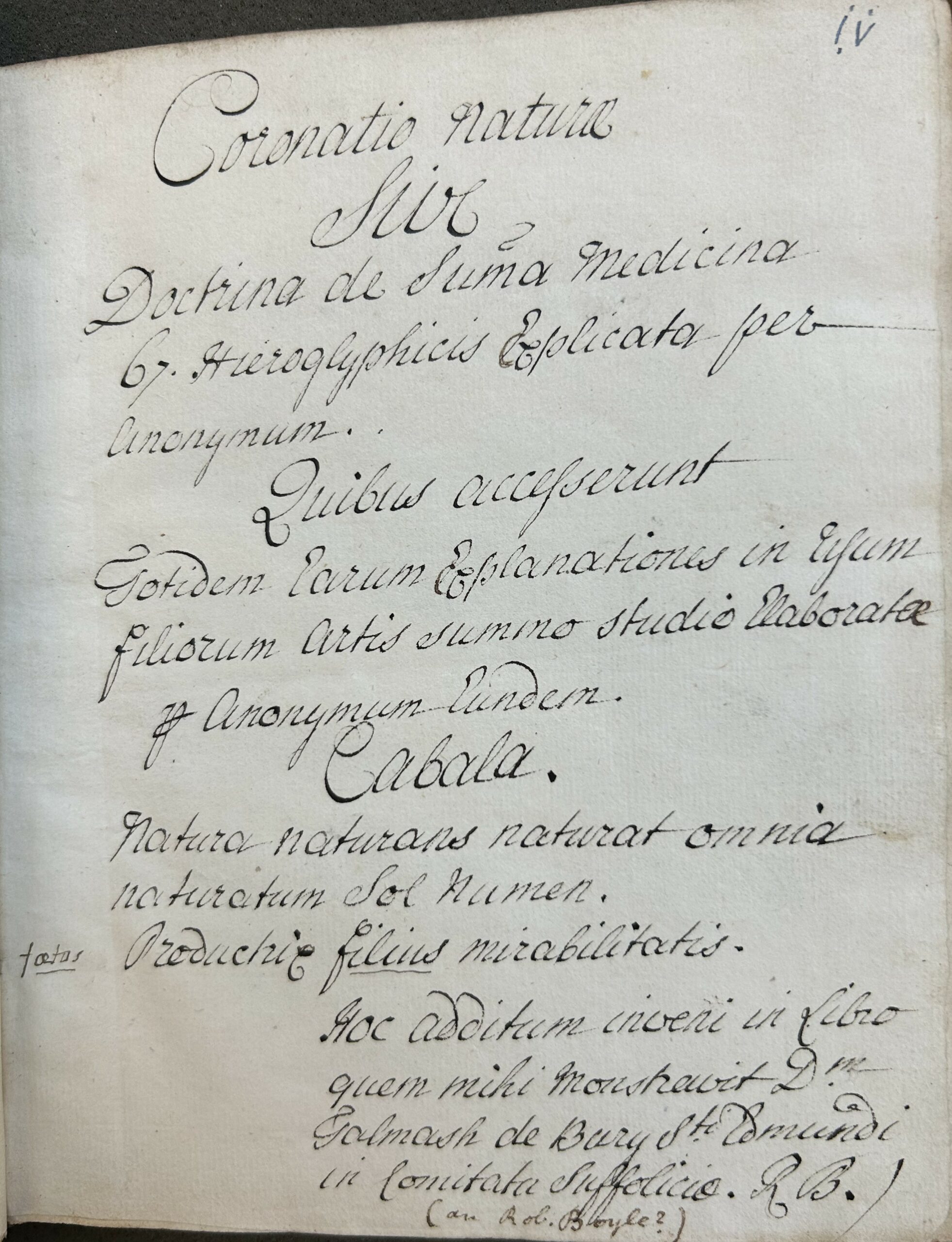
![Book opening showing a hand drawn image of 7 circles surrounding a yellow star. At the centre of the start are two concentric grey and white circles. The surrounding 7 circles each contain a red circle and yellow stars with many zodiac symbols and notes in Latin. At the top of the page is a banner with Cha[x?]s Veterum written in black ink. To the left of the image is a book weight running from top to bottom.](https://sites.hertford.ox.ac.uk/library-archives/wp-content/uploads/sites/3/2024/05/MS-7-1-scaled.jpg)
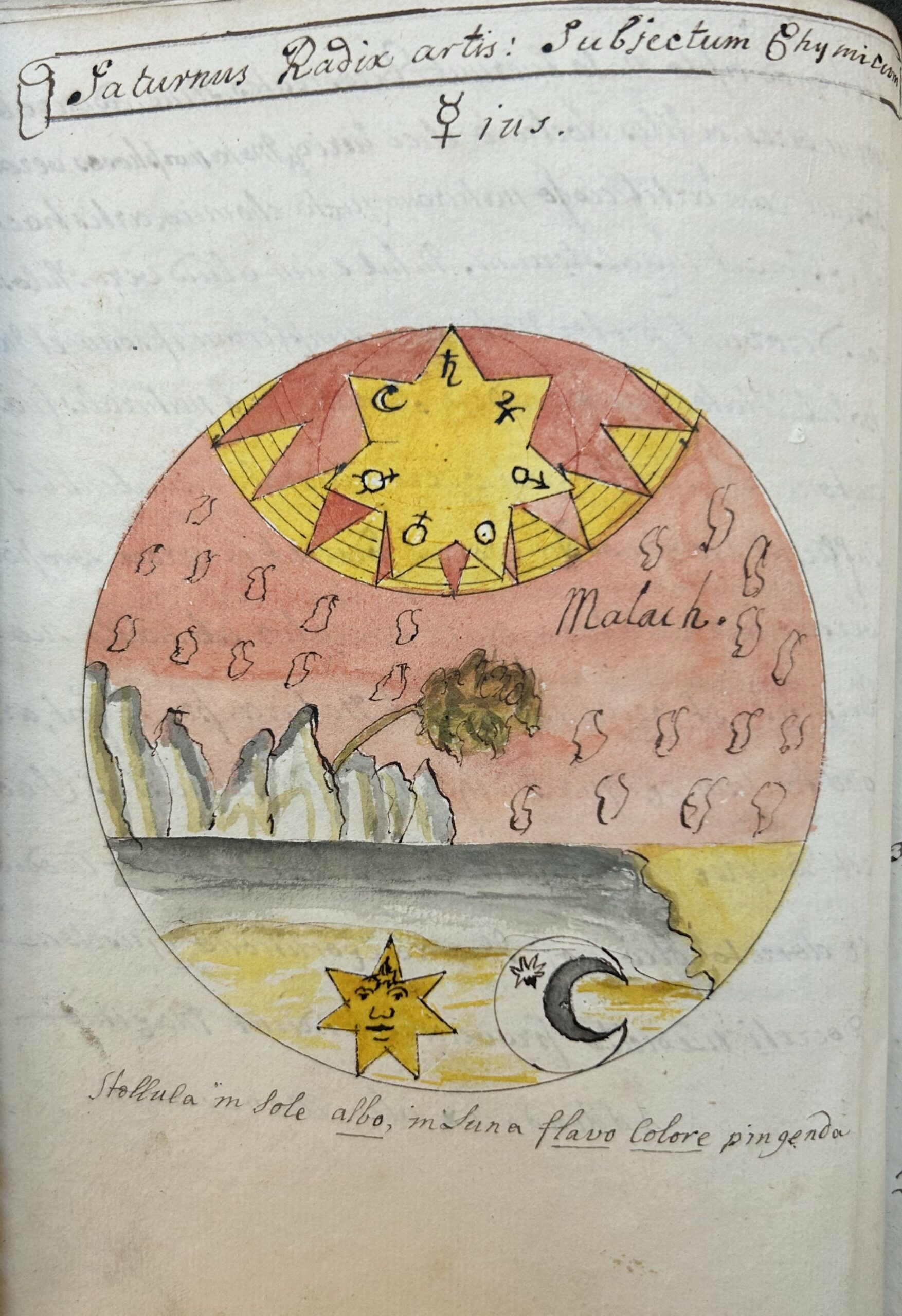
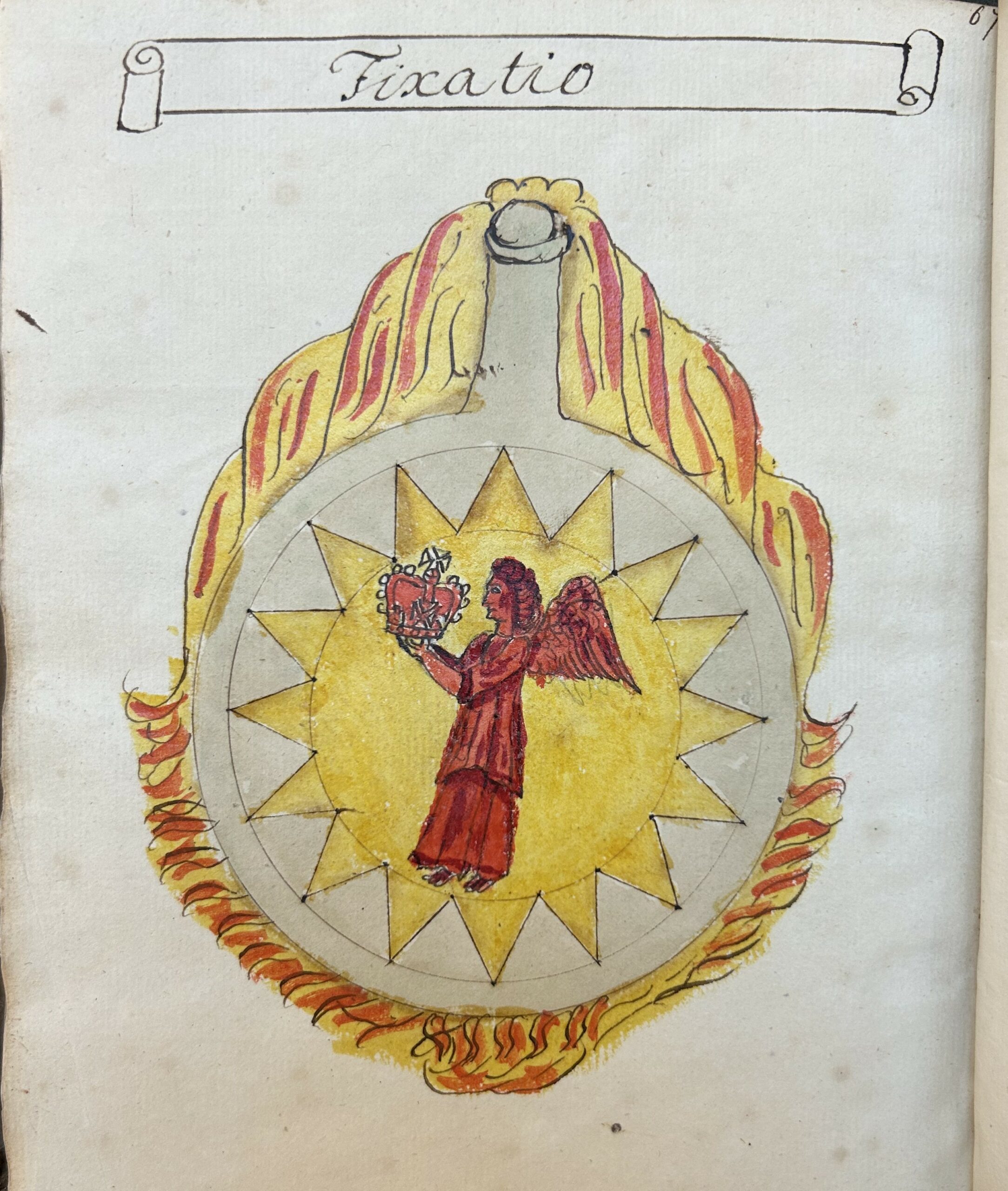
Frustratingly, we do not know at present how this manuscript came to Hertford, but further work into the history of the library collections may throw up clues.
Footnotes
1. For another example of a book owned by Nathaniel Freind see: Hartshorne, Steven. “A Revolution in Print” Rylands Blog (blog). 19 February 2023, https://rylandscollections.com/2023/02/19/a-revolution-in-print/.
2. Record for MS. Top. Oxon. f.31 in Manuscripts and Archives at Oxford University: https://marco.ox.ac.uk/ark:29072/x02r36tz006q
3. Ryley, Hannah. “Constructive Parchment Destruction in Medieval Manuscripts”, Book 2.0, 7(1) (2017): 9–19, https://ora.ox.ac.uk/objects/uuid:89b3c490-c489-4952-82c1-18d162fd25bf.
4. For another example of a ‘Crowning of Nature’ at Cambridge see: Type & Forme. “Alchemy at Cambridge University Library: The Crowning of Nature.” Accessed 27 May 2024. https://www.typeandforme.com/index.php/2021/05/03/alchemy-at-cambridge-university-library-the-crowning-of-nature/.
Links
Information about our upcoming Library renovation project
Rare Books and Archives at Hertford
Hertford Archives’ guide to the history and records of Hart Hall, Magdalen Hall and Hertford College

